Question:1
What are you required to do according to the following road sign?

Category : Traffic Signs
Question:2
Is it permitted to drive on the sidewalk in order to pass a road obstacle?
Category : Rules and Regulations
Question:3
Who is a “road user”?
Category : Rules and Regulations
Question:4
Which driver related ability is impaired during fog?
Category : Safety
Question:5
To whom should you hand lost-and-found objects found in public vehicles?
Category : Rules and Regulations
Question:6
What is the meaning of the following traffic sign?
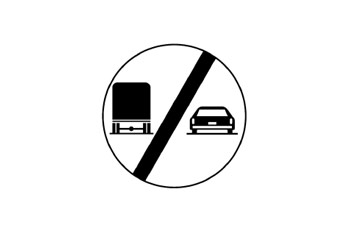
Category : Traffic Signs
Question:7
When are you (a motorcycle rider) required to return to your driving lane at the end of overtaking?
Category : Safety
Question:8
Is it permitted for vehicle drivers to drive under the influence of drugs or alcohol?
Category : Rules and Regulations
Question:9
What do the two following traffic signs have in common?

Category : Traffic Signs
Question:10
What are the most important conditions in order to safely pull onto the “hard shoulder”?
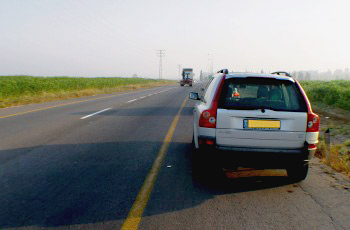
Category : Safety
Question:11
According to the picture, what limitation is faced by the green (commercial) pick-up truck that wishes to turn right?
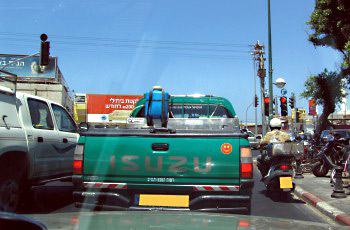
Category : Safety
Question:12
How would you conduct yourself in the following situation?

Category : Safety
Question:13
How should you use the gearbox while driving on a continuous descent?
Category : Know Your Vehicle
Question:14
What are the specific risks and problems in crossing intersections?
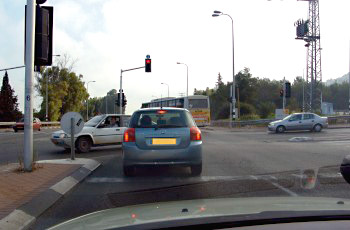
Category : Safety
Question:15
On an urban road, what is the speed limit (in k.p.h) for a commercial vehicle with an all up weight of more than 12,000 kg?
Category : Rules and Regulations
Question:16
How are you required to conduct yourself according to the following picture?
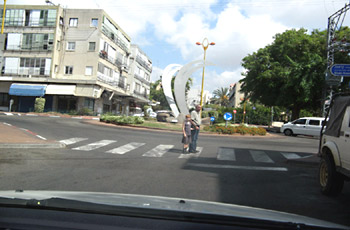
Category : Safety
Question:17
Who is required to certify that the meter is properly functioning if its seal is disconnected?
Category : Rules and Regulations
Question:18
What sign signifies a station for changing a battery of an electric vehicle?

Category : Traffic Signs
Question:19
When is a bus driver obliged to display an identifying document?
Category : Rules and Regulations
Question:20
What is the first thing a driver should verify before driving an unfamiliar vehicle?
Category : Rules and Regulations
Question:21
Why are you required to be more careful while driving after dark?
Category : Safety
Question:22
What is the meaning of the light appearing in the following traffic light?
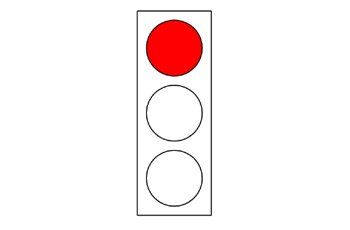
Category : Traffic Signs
Question:23
What are the characteristics of a mountain road?
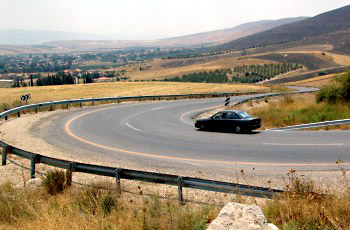
Category : Safety
Question:24
What is the consequence of tyre pressure that is too low?
Category : Know Your Vehicle
Question:25
Is it permitted to drive downhill on neutral gear?
Category : Rules and Regulations
Question:26
In your opinion, why was a continuous line marked on the roadway?
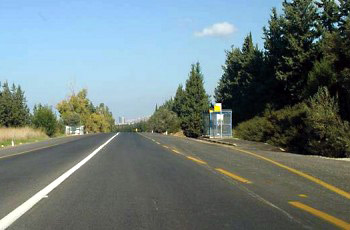
Category : Safety
Question:27
What is the meaning of the following traffic sign?

Category : Traffic Signs
Question:28
When should you operate a flashing yellow lamp above the driver’s compartment?
Category : Rules and Regulations
Question:29
When is it permitted to make a left U-turn in an intersection without traffic lights?
Category : Rules and Regulations
Question:30
If a public bus driver runs out of tickets for a certain route – should he refuse driving a passenger who gets on the bus?
Category : Rules and Regulations

